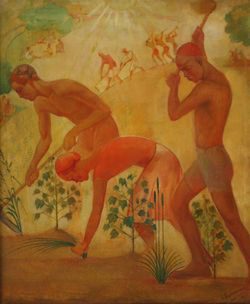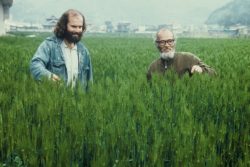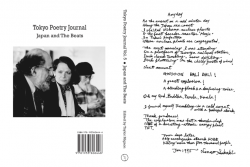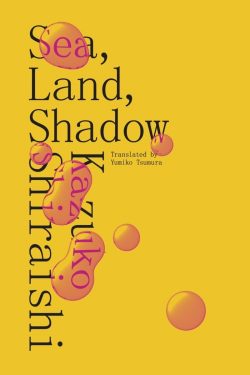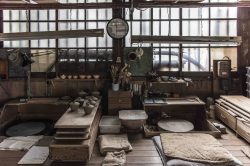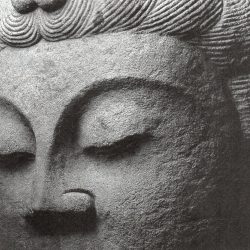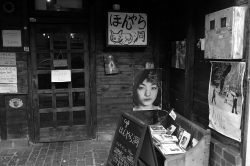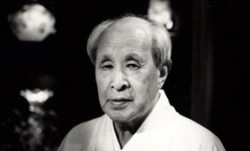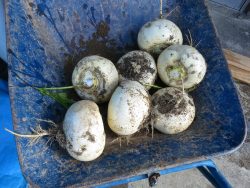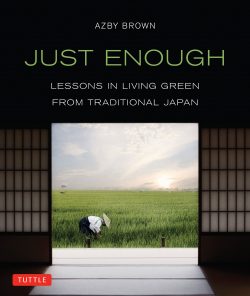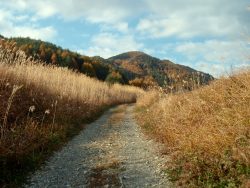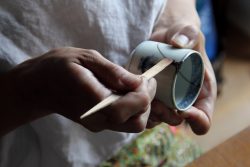Posts by lucinda
Records of a Travel-worn Notebook
During his copious amount of travel, Rowe grew particularly interested in the storytellers he encountered, especially those who are able to embed us strongly in the soil of those places where their stories take root.
Read MoreHunter Gathering with Tomoko Konoike
This is a guest post by Anna Jamieson at Japan Objects (www.japanobjects.com) This autumn, feast on the otherworldly paintings of Japanese artist Tomoko Konoike. Here at Japan Objects we spoke to Konoike about her show: ‘Hunter Gatherer’ now on at the Akita Prefectural Museum of Modern Art until November 25, 2018. Tomoko Konoike…
Read MoreJapan Dissents
Andrews doesn’t paint radicals as innocent victims, however. He describes in great detail the violent, sometimes deadly infighting that tore apart the protest movement in the 1960s and 70s, and argues that this self-destructive behavior nudged the general population toward political apathy in the decades that followed.
Read MoreThe Museum of Forbidden Art
The museum’s obscurity, and Savitsky’s own lack of social standing or professional reputation in the art world, meant that no one in authority thought to look at what he was doing. Savitsky took the opportunity to quietly buy up the works of Russian painters who had been killed, sent to the gulags in Siberia, or otherwise fallen foul of the State.
Read MoreOne-Straw Messenger: Larry Korn, author and natural farming advocate
Larry Korn was a 26-year-old farmhand from the United States living and working at a communal farm in rural Kyoto in 1974 when he decided to go and see for himself an enigmatic farmer-philosopher he had been hearing about through the grapevine in Japan: Masanobu Fukuoka.
Read MoreToPoJo’s “Deep Beatitude”
The whole matter of Beat Lit/Beat Culture’s engagement with Japan has been overdue for thoughtful attention for too long. With writing on Beat Generation personalities and their work at near-saturation point in English, Japan’s pivotal informative role in helping incubate Beat ethics, aesthetics, and insight practices especially has remained oddly elusive.
Read MoreThe Allen Ginsberg of Japan
Kazuko Shiraishi, in person, is similar to her poetry: vivacious, playful, intelligent, flirtatious and most important, loving. This year she turns 87, but still exhibits some of these characteristics, both in her personality and in her work.
Read MoreShokunin and Devotion
The Japanese word ‘shokunin’ is often translated as ‘artisan’ in English. Although it isn’t incorrect by definition, the translation seems to lose the spirit of what a shokunin does. I’m reminded of this every time I explain the works and lives of shokunin to an overseas audience, which happens to be what I do for a living.
Read MoreComfort
A kotatsu is a low table with a blanket or quilt spread over it and a heating device inside. In old houses like ours, the area under the table is often actually sunk into the floor, so the legs can stretch out and the feet can rest directly on the little heater.
Read MoreButsudan Boys
“Portraits of Eldest Sons” is a series of photographs addressing the relationship between young men and their family homes. Photographer Saito Hiroshi took indvidual portraits of himself and his friends—all young men aged around 20 or 21, and all eldest sons—in the rooms where their family butsudan, in-house Buddhist altars, are displayed.
Read MoreThe Stone Carver
He walked back to the main street, along the row of stone workshops. Through the open doors of one he saw, through a haze of white dust, a row of squatting carvers working frantically, pounding their chisels into the stone in a clanging chorus.
Read MoreKnowing Nature
The pre-modern Japanese were not, of course, innocent of environmental exploitation—they razed many mountainsides and turned many fields after reciting the requisite prayers—but they understood their relationship to the environment in a radically different way than modern Japanese do.
Read MoreMeet the KJ Team: Minechika Endo
Lisa Nilsson continues our series of interview with our super volunteers. She speaks to KJ photographer, Minechika Endo.
Read MoreHonyarado: Losing Kyoto’s Counter-Culture Hub
Opening in 1972, Honyarado became a hub and stronghold of anti-war activities and a symbol of youth counterculture. We campaigned for the release of political prisoners in South Vietnam and South Korea, and supported court cases against obscenity charges.
Read MoreThe Glass Room
One enormous bowl, by contemporary American glass artist Dalie Chihuly, glows from a showcase beneath a transparent floor of glass. Frothy green tea is served to visitors in 19th century glass bowls from Italy. The keeper of the glass room is the shrine’s former head priest, 76 year-old Torii Hiroyoshi.
Read MoreMeet the KJ Team: Maithilee Jadeja
Lisa Nilsson speaks to some of our volunteers based in Kyoto. First up is Maithilee Jadeja.
Read MoreNoguchi Isao on Heirloom Seeds
“Since ancient times, farmers would carefully select seed from vegetables that grew well and tasted wonderful, in addition to other characteristics including shape and color. By saving such seed season after season, these native seeds became trusted as stable varieties over centuries.”
Read MoreKJ Summer 2018 Reads: Titles from Tuttle
As part of their 70th-year anniversary celebrations, KJ has teamed up with Tuttle Publishing, the Asia specialist, for this four-part series.
Read MoreInto the Hills
Up into the Northern Hills,
up the slender, winding road
to the last bus stop; get out, walk
the narrowing valley to the end,
climb steep stone stairs.
Pause there for a cup of tea.
Mio Heki: Kintsugi Artist and Urushi Master
“I see urushi as a way to connect ourselves and our culture with nature in so many ways. Because urushi and kintsugi art is all natural, it is a good way to remind ourselves that we are all part of nature, being pieces of our universe.”
Read MoreInterview with David Cozy, KJ Reviews Editor
“What I am most proud of as an editor is that I have expanded the stable of writers who review for us, both bringing in talented people new to KJ, and also enticing those who’d done other kinds of writing for KJ over to the reviews section.”
Read More



